How watering & Spacing impacts Swiss chard
Meet 2022 MVP (Most Valuable Plant): Ms. Swiss Chard. I purchased her from Survival Garden Open Seed Vault via Amazon. Although chard prefers cool weather, she can tolerate heat more than spinach and lettuce. She thrived the entire 2022 season. Like the energizer bunny, it kept growing and growing and growing because all the components were in place last season. April showers brought May flowers that feed the beneficial life form and the summer and fall temperatures were moderate.
This season (2023) she is growing in a Hugelkultur-style raised bed with cabbage, marigold, cilantro, and a volunteer sunflower. We directly sowed her on April 16, along with transplants that I started on March 12. This was 10 days from the last frost spring frost date (April 26). I fertilized the soil with chicken manure compost in early April. When I transplanted the seedlings, I used Miracle-Gro Quick Start. The seeds germinated in two weeks and all seedlings were doing well despite the scarcity of rain.
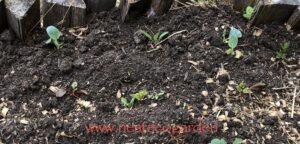
In late May, I noticed a change in their color. Their leaves became yellowish brown. But I did not notice any change of color in the companion plants. I observed no aphids, fleas, beetles, or any other pests. But I noticed that the soil was moist but well drained. The temperature has been higher than normal for spring and the lack of rain led me to water by hand using my well water. In addition, there was an air advisory because of the Canadian wildfire.
Despite consistent watering, the chard continued to become more yellow. I finally realized that I was not turning off the softener prior to watering the garden. This means we have been watering the garden with soft water, which has increased the salinity of the soil.
What does sodium do to the soil? It makes the soil more thirsty for water and it can suppress plant growth. It reduces the amount and rate of water that the plant root can take up. As the water evaporates, the plant transpires water and salt remains behind in the roots. This can affect plant growth. The Hugelkultur style provides organic material that ensures the soil is well-drained, which is my saving grace.
Careful analysis led to two causes of the problem. I could attribute the cause to either the effects of soft water or a fungal disease. When I switched to regular well water, there was a mild improvement in the color. I am convinced that this is a fungal disease in combination with soft water issues.
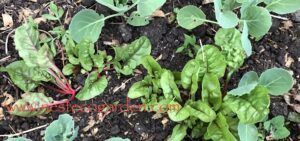
Is it Leaf spot or Downy mildew?
Cercospora beticola fungus causes leaf spots and can survive in the soil for two years. This fungus causes the chard to have pale brown spots with red edges. My Swiss chard plant did not have those characteristics. Their upper leaf surfaces were pale green to yellow and there were no red edges. This is characteristic of Downy mildew. It is a fungus-like microbe caused by Peronospora farinosa. In addition, cool temperatures and high humidity make downy mildew favorable.
Non-chemical management of Downy mildew includes proper spacing, avoiding overhead watering, crop rotation, and discarding diseased plants. Avoiding excess nitrogen is also important because nitrogen leads to increased leaf production. Chemical management of Downy mildew is available, but for the moment, I am avoiding these methods.
In my excitement for planting Swiss chard, I did not space them 6-8 inches apart, which makes it more likely for water to remain at the roots and decrease circulation. My treatment plan for Downy mildew included daily well watering in the morning in the absence of rain. I also discarded the diseased leaves in the trash to stop the spread of the illness. I thinned the plants and spaced them 6 inches apart to give them more growing space.
And so far, it is working. Look at MVP Chard now.
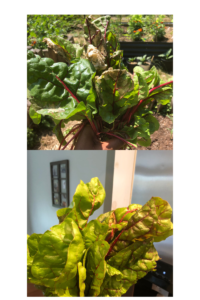
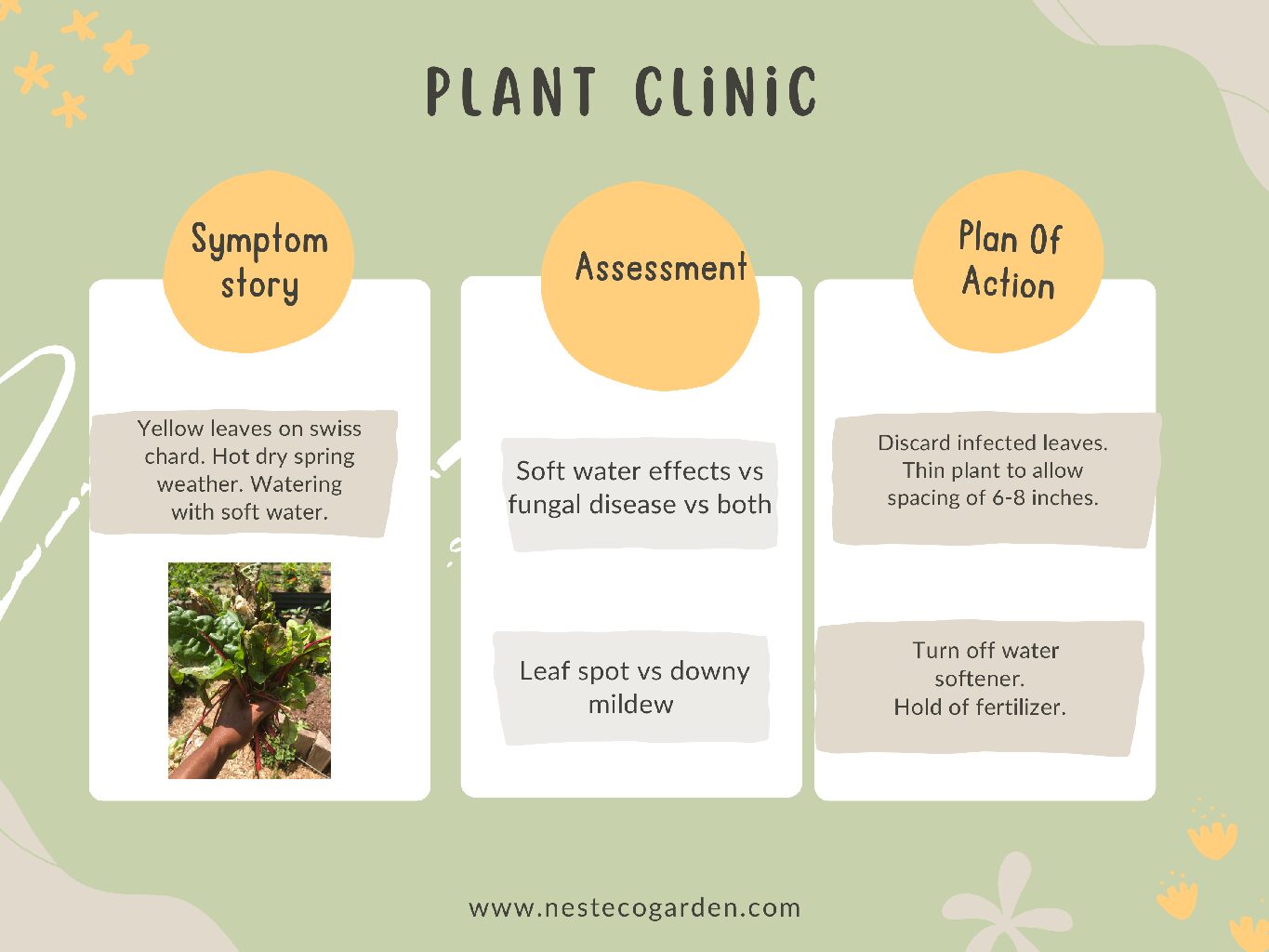


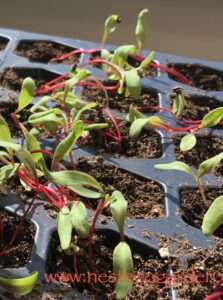
My name is Daniel .I am happy for this information.